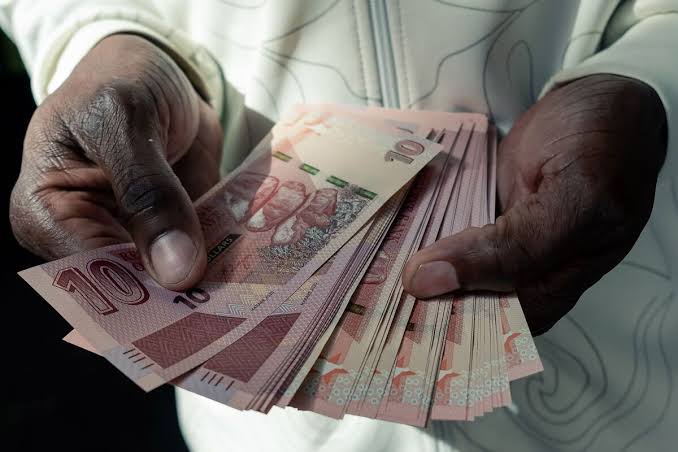In a remarkable turn of events, the demand for the Zimbabwean dollar has surged as businesses and individuals increasingly opt for local currency transactions.
The Zimbabwean dollar has now regained its lost value for the third consecutive time at the wholesale foreign currency auction, settling at US$1 to ZWL$5,395 this week, compared to US$1 to ZWL$5,739 last week.
This surge in demand is seen as a positive response to a series of policy interventions implemented by monetary authorities.
These measures aim to address excess liquidity and restore macro-economic stability, effectively stabilizing the exchange rate and fostering price stability.
Experts predict that the stability in the exchange rate will drive the demand for local currency in domestic transactions, which had previously been avoided due to its volatility.
The recent developments have already led to a halt in price increases, alleviating pressure on consumers who now anticipate a drop in prices in the short to medium term.
According to the Reserve Bank of Zimbabwe (RBZ), the highest bid rate at the wholesale auction system this week was ZWL$5,550 to the US dollar, while the lowest was ZWL$5,200.
This significant drop from the previous weeks, where the rate reached ZWL$6,926, showcases the sustained strengthening of the local currency.
Economic analysts emphasize the importance of this strengthening for market stabilization, restoration of consumer purchasing power, and maintaining adequate aggregate demand for products and services.
A recent survey conducted by the Chronicle revealed that more businesses, previously pricing their goods exclusively in foreign currency, are now encouraging customers to transact using the local currency.
Moreover, prominent supermarkets have started rejecting South African rand coins and favoring Zim dollar bond notes.
Several small retail outlets have also embraced the local currency and are actively seeking to acquire Point of-Sale (POS) machines.
These businesses now accept mobile money payments and card swipes, reflecting a notable shift in their previous reluctance to use local currency.
Although some businesses initially adopted high parallel market rates, the prevailing bank rate is now widely applied.
Mr. Denford Mutashu, President of the Confederation of Zimbabwe Retailers, expressed his appreciation for the measures taken, stating, “The Zimdollar is now honey. It has restored its attractiveness. Kudos to His Excellency President ED Mnangagwa for a raft of measures to shore up stability.”
The Confederation of Zimbabwe Industries (CZI) also acknowledged the positive impact of the government’s measures in halting the free fall of the local currency.
It emphasized the need for the government to stay the course and fully implement these measures to sustain the progress made.
The liberalization of the exchange rate reduced the monthly average exchange rate premium from 92% in May 2023 to 38% in June 2023, according to the CZI.
A local businesswoman in Bulawayo’s downtown district acknowledged the importance of embracing the local currency, urging others to support the community’s efforts.
She highlighted the need for mutual respect between economies and emphasized the need to charge prices in US dollars but convert them using the prevailing legal bank rates.
However, there are reports of local entrepreneurs who had previously priced their goods using exorbitant black-market rates above $10,000 to the US dollar, displaying a lack of alignment with the prevailing market conditions.
Key strategic interventions implemented by authorities include the directive for import duties to be paid in Zimbabwe dollars, with the exception of luxury items, the transfer of external payment obligations from the Reserve Bank of Zimbabwe (RBZ) to the Treasury, and the introduction of the wholesale foreign currency auction for banks.
Additionally, the Treasury has mandated that all government institutions collect fees and charge for services










